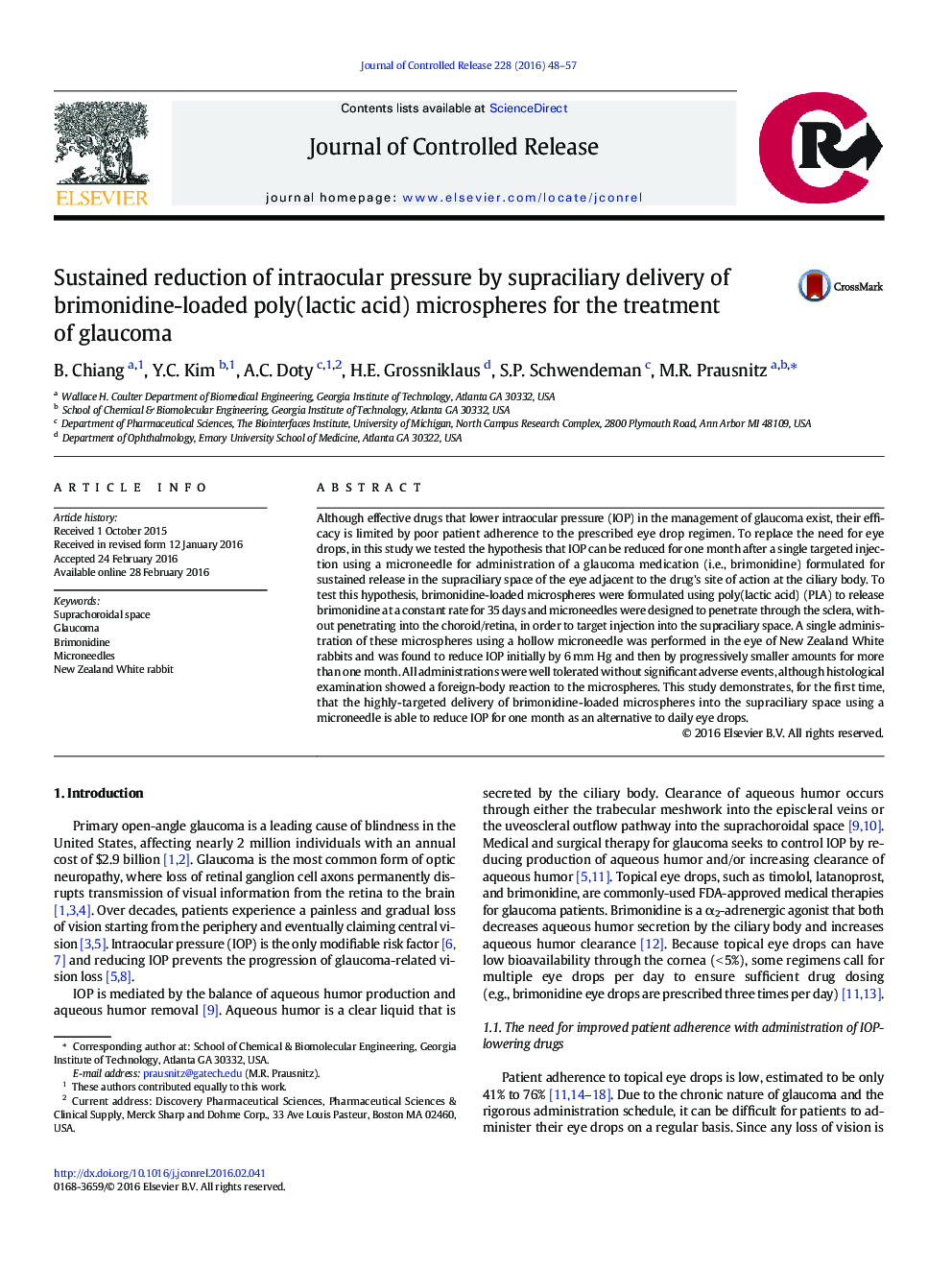| Article ID | Journal | Published Year | Pages | File Type |
|---|---|---|---|---|
| 1423545 | Journal of Controlled Release | 2016 | 10 Pages |
Although effective drugs that lower intraocular pressure (IOP) in the management of glaucoma exist, their efficacy is limited by poor patient adherence to the prescribed eye drop regimen. To replace the need for eye drops, in this study we tested the hypothesis that IOP can be reduced for one month after a single targeted injection using a microneedle for administration of a glaucoma medication (i.e., brimonidine) formulated for sustained release in the supraciliary space of the eye adjacent to the drug's site of action at the ciliary body. To test this hypothesis, brimonidine-loaded microspheres were formulated using poly(lactic acid) (PLA) to release brimonidine at a constant rate for 35 days and microneedles were designed to penetrate through the sclera, without penetrating into the choroid/retina, in order to target injection into the supraciliary space. A single administration of these microspheres using a hollow microneedle was performed in the eye of New Zealand White rabbits and was found to reduce IOP initially by 6 mm Hg and then by progressively smaller amounts for more than one month. All administrations were well tolerated without significant adverse events, although histological examination showed a foreign-body reaction to the microspheres. This study demonstrates, for the first time, that the highly-targeted delivery of brimonidine-loaded microspheres into the supraciliary space using a microneedle is able to reduce IOP for one month as an alternative to daily eye drops.
Graphical abstractTraditional delivery of brimonidine using eye drops results in low bioavailability at the drug's site of action at the ciliary body. Single administration of sustained-release microspheres immediately adjacent to the ciliary body was efficacious for 1 mo.Figure optionsDownload full-size imageDownload high-quality image (177 K)Download as PowerPoint slide
